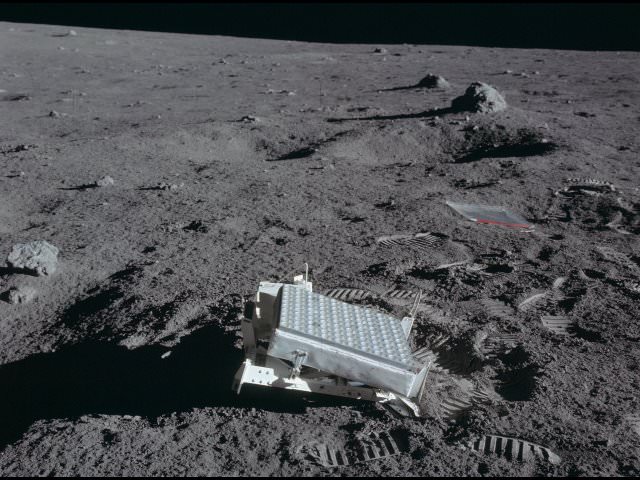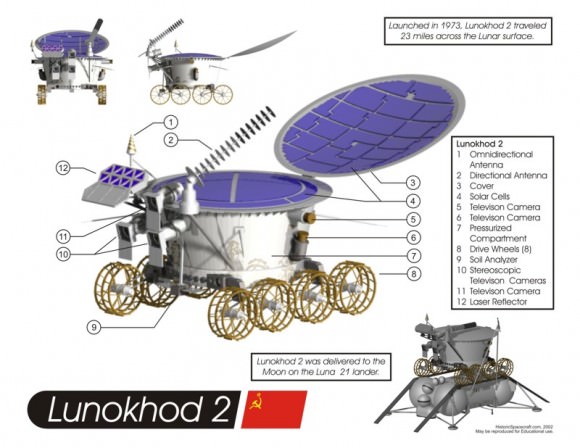In the 18th century, observations made of all the known planets (Mercury, Venus, Earth, Mars, Jupiter and Saturn) led astronomers to the realization that there was a pattern in their orbits. Eventually, this led to the Titius–Bode law, which predicted the amount of space that naturally existed between each celestial body that orbited our Sun. In accordance with this law, astronomers noted that there appeared to be a discernible gap between the orbits of Mars and Jupiter.
Investigations into this gap eventually resulted in astronomers observing several bodies of various size. This led to the creation of the term “asteroid” (Greek for ‘star-like’ or ‘star-shaped’), as well as “Asteroid Belt”, once it became clear just how many there were. Through various methods, astronomers have since confirmed the existence of several million objects between the orbit of Mars and Jupiter. They have also determined, with a certain degree of accuracy, how far it is from our planet.
Structure and Composition:
The Asteroid Belt consists of several large bodies, coupled with millions of smaller size. The larger bodies, such as Ceres, Vesta, Pallas, and Hygiea, account for half of the belt’s total mass, with almost one-third accounted for by Ceres alone. Beyond that, over 200 asteroids that are larger than 100 km in diameter, and 0.7–1.7 million asteroids with a diameter of 1 km or more.

It total, the Asteroid Belt’s mass is estimated to be 2.8×1021 to 3.2×1021 kilograms – which is equivalent to about 4% of the Moon’s mass. While most asteroids are composed of rock, a small portion of them contain metals such as iron and nickel. The remaining asteroids are made up of a mix of these, along with carbon-rich materials. Some of the more distant asteroids tend to contain more ices and volatiles, which includes water ice.
Despite the impressive number of objects contained within the belt, the Main Belt’s asteroids are also spread over a very large volume of space. As a result, the average distance between objects is roughly 965,600 km (600,000 miles), meaning that the Main Belt consists largely of empty space. In fact, due to the low density of materials within the Belt, the odds of a probe running into an asteroid are now estimated at less than one in a billion.
The main (or core) population of the asteroid belt is sometimes divided into three zones, which are based on what is known as “Kirkwood gaps”. Named after Daniel Kirkwood, who announced in 1866 the discovery of gaps in the distance of asteroids, these gaps are similar to what is seen with Saturn’s and other gas giants’ systems of rings.
Orbit Around the Sun:
Located between Mars and Jupiter, the belt ranges in distance between 2.2 and 3.2 astronomical units (AU) from the Sun – 329 million to 478.7 million km (204.43 million to 297.45 million mi). It is also an estimated 1 AU thick (149.6 million km, or 93 million mi), meaning that it occupies the same amount of distance as what lies between the Earth to the Sun.
The distance of an asteroid from the Sun (its semi-major axis) depends upon its distribution into one of three different zones based on the Belt’s “Kirkwood Gaps”. Zone I lies between the 4:1 resonance and 3:1 resonance Kirkwood gaps, which are roughly 2.06 and 2.5 AUs (3 to 3.74 billion km; 1.86 to 2.3 billion mi) from the Sun, respectively.
Zone II continues from the end of Zone I out to the 5:2 resonance gap, which is 2.82 AU (4.22 billion km; 2.6 mi) from the Sun. Zone III, the outermost section of the Belt, extends from the outer edge of Zone II to the 2:1 resonance gap, located some 3.28 AU (4.9 billion km; 3 billion mi) from the Sun.
Distance from Earth:
The distance between the Asteroid Belt and Earth varies considerably depending on where we measure to. Based on its average distance from the Sun, the distance between Earth and the closest edge of the Belt can be said to be between 1.2 to 2.2 AUs, or 179.5 and 329 million km (111.5 and 204.43 million mi). But of course, at any given time, part of the Asteroid Belt will be on the opposite side of the Sun relative to us as well.
From this vantage point, the distance between Earth and the Asteroid Belt ranges from 3.2 and 4.2 AU – 478.7 to 628.3 million km (297.45 to 390.4 million mi). To put that in perspective, the distance between Earth and the Asteroid Belt ranges from being slightly more than the distance between the Earth and the Sun (1 AU), to being the same as the distance between Earth and Jupiter (4.2 AU) when they are at their closest.
Naturally, any exploration or other kind of mission launched from Earth is going to take the shortest route, unless it is aiming for a specific asteroid. And even then, mission planners will time the launch to ensure that we are closest to the destination. Hence, we can safely use the estimates of 1.2 – 2.2 AU to gauge the distance between us and the Main Belt.
Even so, at its closest, getting to the Asteroid Belt would involve a bit of a hike! In short, it is approximately 179.5 million km (or 111.5 million mi) distant from us at any given time. As such, knowing just how much time and energy it would take to get their and back is going to come in handy if and when we begin mounting crewed missions to the Belt, not to mention the prospect of asteroid mining!
We have written many interesting articles on the Asteroid Belt here at Universe Today. Here’s What is the Asteroid Belt?, Where Do Asteroids Come From?, Why the Asteroid Belt Doesn’t Threaten Spacecraft, Why isn’t the Asteroid Belt a Planet?, and 10 Interesting Facts about Asteroids.
To learn more, check out NASA’s Lunar and Planetary Science Page on asteroids, and the Hubblesite’s News Releases about Asteroids.
Astronomy Cast also some interesting episodes about asteroids, like Episode 55: The Asteroid Belt and Episode 29: Asteroids Make Bad Neighbors.
Sources:



